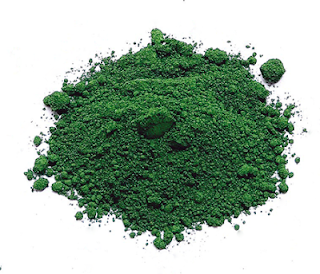Potassium
Potassium is known as the 'great alkalizer'. It is one of the electrolytes that play a role in the body for so many different things. Potassium and sodium play a delicate game of tug o'war over the space both inside and outside the cell. They work together in every cell in the body. An imbalance of either of these minerals can lead to serious problems.
Potassium is a bluish white element. It is known for its ability to alkalize the body, neutralize toxic conditions, antiseptic abilities and has been used as a preservative and a cooling agent. It is a highly explosive mineral and often used in gunpowder. It is commonly found combined with sulphur, phosphorus or chlorine. Used with phosphorus it is a main component of the gray nerve fibers (those that make up the brain and spinal column). When combined with chlorine it is beneficial to the glandular organs and when bound with sulphur it helps to increase the oxygen transfer in the cells. Our cells contain more potassium than any other mineral. It is essential for enzymatic functions and for fluid balance in the body. It is needed to convert glucose into glycogen and is used for muscle contraction, nerve transmissions, hormone secretions, cardiovascular function, etc.
Many studies have been conducted on this mineral, most in regards to high blood pressure. However, there have also been studies done on it in regards to diabetes. Doctors found that when supplementing potassium in diabetics that their blood pressure fell and their blood sugar levels dropped. They found that potassium had a specific bearing on the glands related to diabetes. Potassium activates certain enzymes that are necessary to carbohydrate metabolism, which is part of the reason it may be so beneficial and effective for diabetes in general. There are at least 8 enzymes in the body that are dependent on potassium for their functioning.
Most people think of bananas when potassium is mentioned. The truth is that bananas contain decent amounts of potassium but the highest sources of this mineral are actually black olives, watercress and potato peeling broth. Dr. Bernard Jensen used potato broth many times to help people overcome chronic health complaints.
In studies done on rats fed a stroke inducing diet they found that those rats given potassium had a 2% rate of fatal strokes as opposed to 83% in the placebo group. In another study, potassium was found to protect the kidneys from damage due to high blood pressure.
It is interesting to note that potassium is one of the most prescribed minerals by doctors and still there is a huge deficiency among the populace. Links have been made between a potassium deficiency and heart disease, high blood pressure, diabetes, heart arrythmias, acute muscular weakness, fatigue, muscle spasms, etc. Potassium is easily lost by the body through improper dietary habits, alcoholism, prolonged illnesses, anorexia, diarrhea, vomiting, laxatives, diuretics, excessive use of steroids or antibiotics, coffee, sugar, severe burns or tissue injuries, surgery, etc. It is rare to have an excess of this element but it can happen. Generally an excess happens when there is severe kidney disease and potassium is not excreted, or if there is a problem with acid in the body, a severe injury that would cause potassium to leak out of the cells into the blood or insufficient adrenal gland function.
There are a number of potassium supplements on the market. It is also often added to sports drinks as it is well known to the athletic industry that excessive sweating will deplete your electrolytes so they are important to replace. Many sports drinks are also laden with artificial sweeteners so please read labels before imbibing. Potassium supplements can also be somewhat irritating on the stomach so are best taken after a meal on a full stomach.
In some studies it was found that potassium may also help to prevent kidney stones. Scientists at the Kaiser Permanente Medical Center in California found that giving a combination of potassium and magnesium to kidney stone patients reduced their risk of developing more kidney stones. Of the patients tested, only 12.9% of those on the potassium supplement had stones reform as opposed to 63.6% in the placebo group.
In some studies they found that potassium is also effective against cardiovascular disease. Potassium was found to reduce free radicals, help with blood clotting, platelet aggregation and the proliferation of vascular smooth muscle cells. It has also been found beneficial in chronic fatigue and menopause.
The best food sources of potassium are black olives, watercress, potato peeling broth, kelp, dulse, fruits, vegetables, leafy greens, whole grains, wheat germ, etc. When consuming these foods they should be fresh and not processed as the processing and heat deplete the potassium.
As is customary with our posts we are including some links below for your perusal. We would also like to include a disclaimer...none of our posts have been approved by the FDA. They are meant to educate only and are not meant to diagnose, treat, prevent, cure or take the place of a qualified physicians advice. Please seek the advice of a physician before starting a supplement program.

















